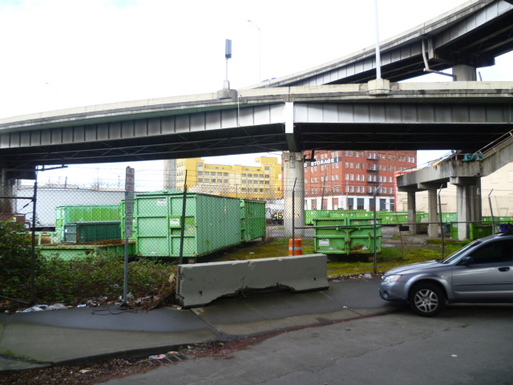 Urban blight on east side of Willamette River in Portland.
Urban blight on east side of Willamette River in Portland. Coming back to the USA and its cities always presents me with a perplexing mix of feelings. There are certain delights, some incredibly alive and exciting neighborhoods, and abundant areas of promise. On the whole, however, I am left wondering why American cities seem to be so far behind other wealthy cities around the world in terms of physical infrastructure and the attractiveness and liveliness of their streets. I’m writing about this because I believe we as Americans can and should do far better. Somehow we have generally forgotten how to grow and sustain great cities, the kind of cities where streets don’t simply serve as corridors for getting from one place to another, but are engaging destinations in themselves. I recognize that many cities in the US are enjoying a revival, but they have a long way to go to compete with the most livable cities in the world.
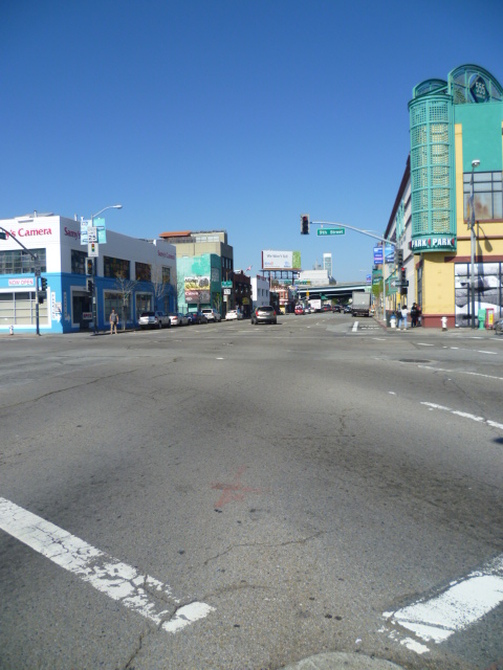 Developing world city? No, central San Francisco.
Developing world city? No, central San Francisco. There are many ways to evaluate urban environments, such as the methodologies used in livability rankings by firms such as Mercer and the Economist Intelligence Unit. In my research I focus on my own subjective experience as a pedestrian, cyclist and public transport user in a broad sampling of a given city’s area. I never drive a car, although I occasionally become a passenger in one. I don’t gravitate to tourist attractions (what do they really tell you about a city?), but instead try to see the face of urban life across socioeconomic lines through a kind of random sampling and, honestly, aimless wandering. I think I’ve developed a good nose for sniffing out interesting and representative areas wherever I go. I try to put my observations into a more objective context through reference to statistics and other information about a city. My goal is to get closer to understanding how the ‘whole’ of a city comes together and how smoothly it functions for all its inhabitants, especially those at lower income levels. In fact, as I’ve written before, I believe you can learn far more about a city and society by observing how the lower socioeconomic classes live than by observing how the wealthy live.
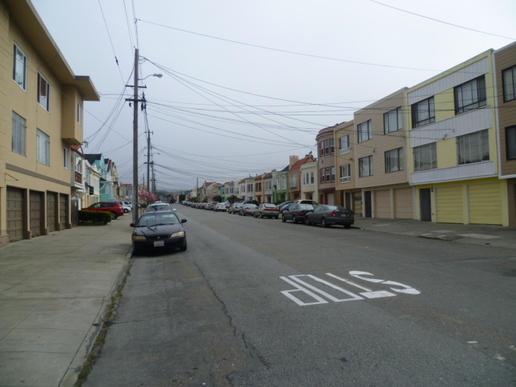 Grey and treeless street in Sunset district of San Francisco.
Grey and treeless street in Sunset district of San Francisco. You can see the poor land utilization in the unsightly parking lots that line streets and often dominate suburbanized city centers. You can see the shoddiness in new construction that utilizes low-grade materials that are not designed to last and improve with age. The roughness is clearly evident in the poorly paved streets and sidewalks. You can experience the backwardness on the generally outdated, unattractive and inconvenient public transportation systems. Most jarringly, perhaps, you are faced with the astounding social inequality whenever you leave behind the enclaves of the middle class and wealthy, especially when out of the isolating cocoon of an automobile. The social problems are not impacting merely an isolated fringe. Statistics on urban crime, health, homelessness and education put American cities into a league of their own in the developed world. In fact, it is the huge gap between wealthy areas and the rest, combined with auto-centric transport, that most uniquely identifies American cities.
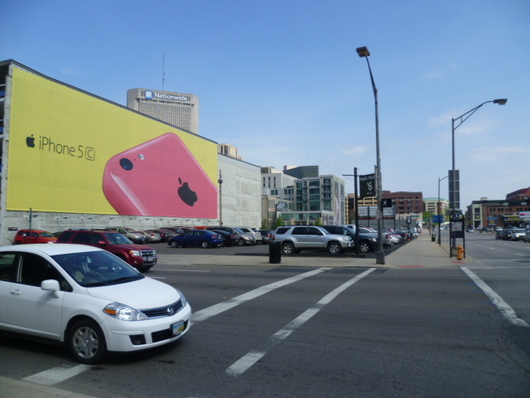 Lifeless central city dominated by parking lots. Columbus, Ohio
Lifeless central city dominated by parking lots. Columbus, Ohio When I ask Americans about the problems facing American cities, I quickly realize how foreign my view of American cities is. Americans are generally proud of their cities and have few suspicions that they suffer in comparison with cities in Europe or other wealthy countries. Ask a western European, Canadian, Japanese or Australian for their candid opinions on US cities, however, and an array of negative characterizations arise. Beyond conversational anecdotes, American cities do rather poorly, as I've pointed out, in the most famous international livability rankings. When considering America's long history of wealth, it’s rather astounding to realize that no American city makes it to the top 20 cities in the world (Honolulu makes it in one ranking) in terms of quality of life, while almost all of Canada’s and Australia’s major cities do.
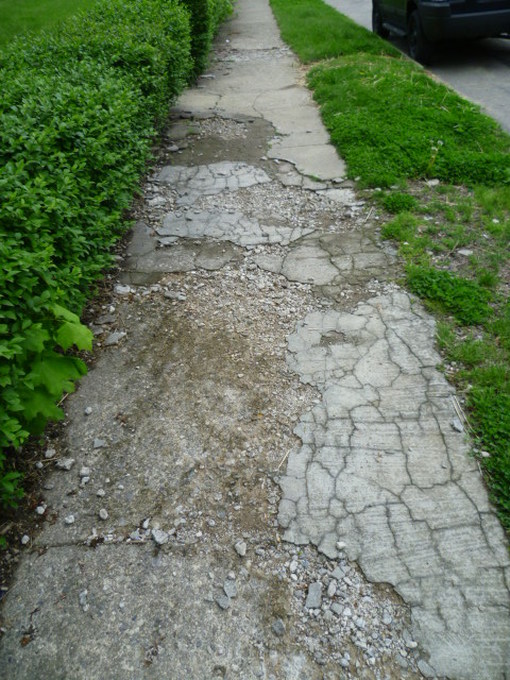 Crumbling sidewalk, central residential area, Columbus, Ohio.
Crumbling sidewalk, central residential area, Columbus, Ohio. Americans have come to settle for a kind of rough functionality in their cities without focusing on the finer points of city life. Maybe Americans tend not to notice the details of their cities because they are generally racing through them in their cars. If they took more time to walk, ride a bicycle, or use public transportation, their views would probably change. In fact, one of the reasons automobiles may be so popular in the US is not only that they provide the quickest or only means of getting around, but they also provide a relatively safe isolation from the frequently unattractive urban reality they traverse.
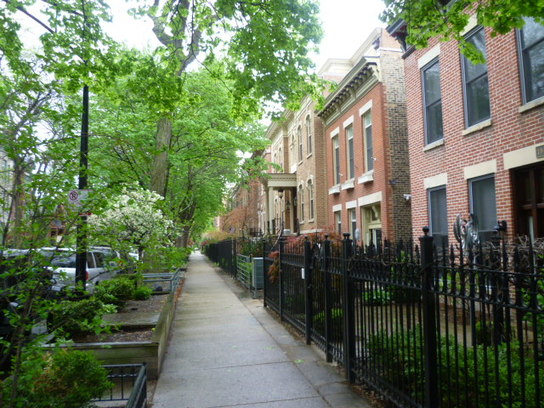 Charming neighborhood, near west side, Chicago.
Charming neighborhood, near west side, Chicago. This state of affairs is an unnecessary shame, as American cities still have many positive qualities that could be leveraged to create pleasing urban environments. These qualities include remarkable friendliness, a lot of green space, cultural diversity and economic dynamism.
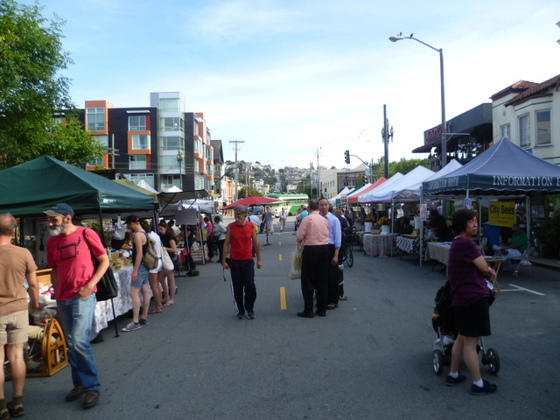 Farmer's market in the wonderfully lively and diverse Castro neighborhood of San Francisco.
Farmer's market in the wonderfully lively and diverse Castro neighborhood of San Francisco. American cities also tend to have a lot of green, particularly in their residential neighborhoods. Green right-of-ways are common in most cities, which often support a healthy canopy of street trees. In denser cities in Europe, this is often not the case.
Another hallmark of many American cities is incredible diversity. There are often large ethnic, racial and cultural minorities. In most major cities there is no longer a white majority. This diversity creates a dynamic social atmosphere full of all sorts of surprises including a huge range of authentic ethnic restaurants. I believe it's rather easy to find a niche and feel at home in many American cities.
Finally, it's obvious that the American economic system is overall very productive. There is a general feeling in wealthier and middle-class districts of incredible material abundance. This wealth, combined with a relatively low population density in most areas, makes for generously proportioned homes surrounded by green. It's rather stunning to see how well so many people live on a continental scale.
In my postings that follow on four American cities, I will delve further into these thoughts, try to get to the bottom of what ails America's cities, and look for examples of both troubled and thriving streets and neighborhoods.

 RSS Feed
RSS Feed

